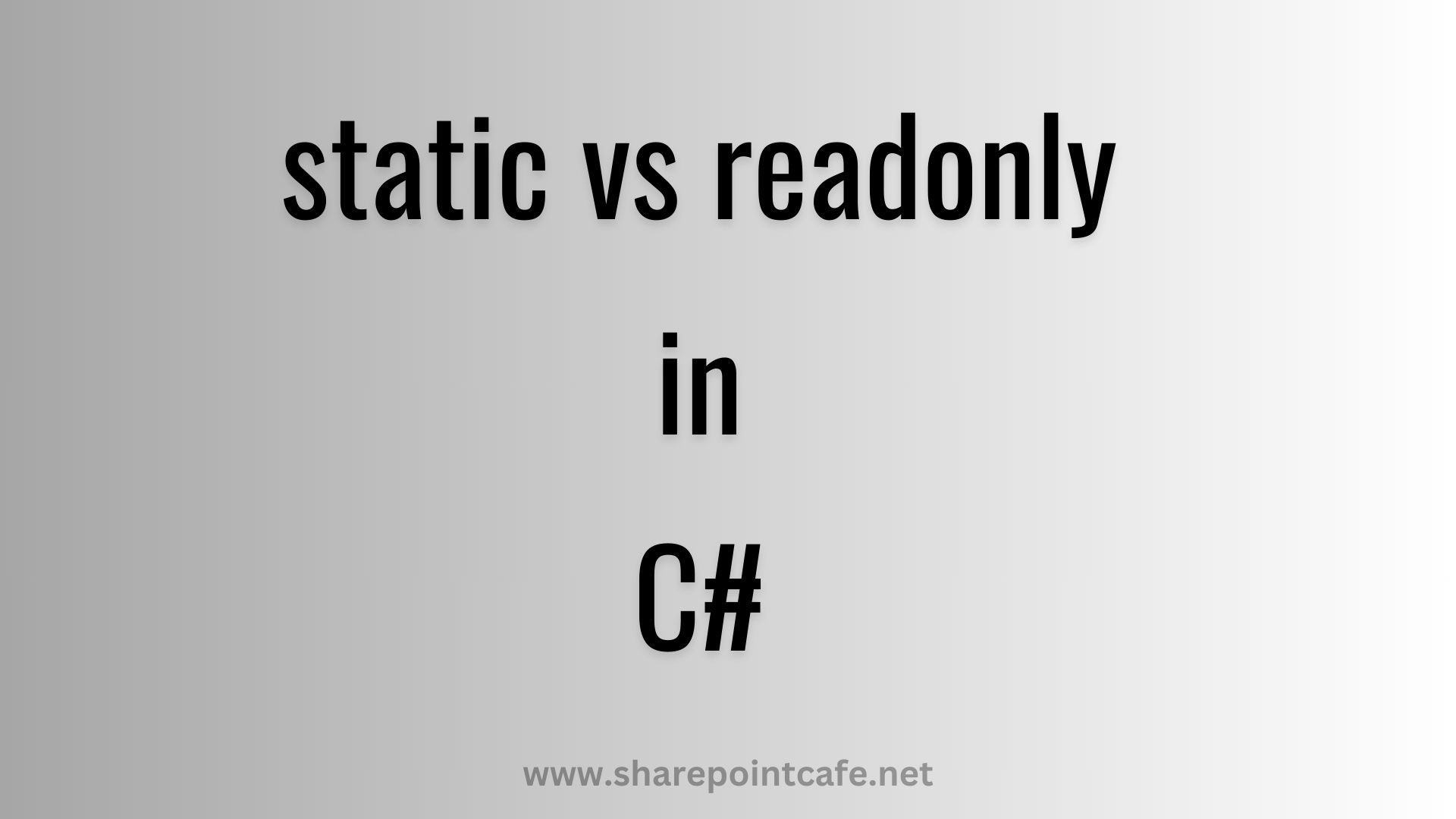In C#, both the static and readonly keywords are used to define fields, but they serve different purposes and are used in distinct scenarios. Understanding when and how to use these keywords is essential for writing efficient and maintainable code. Let’s dive into the differences and specific use cases for each.
Please read this blog: Sealed Class in C#Static Keyword
The static keyword in C# is used to declare a member of a class that belongs to the type itself rather than to any specific object. This means that static members are shared among all instances of the class. Here are the main points and use cases for the static keyword:
- Class-Level Scope:
staticmembers are accessed using the class name rather than an instance of the class. - Shared Data: Since
staticmembers are shared across all instances, they are useful for data or methods that should be common to all objects. - Memory Efficiency: Only one copy of a
staticmember exists, regardless of how many instances of the class are created.
When to use static Keyword
We can use static keywords for below uses:
- Methods that do not depend on instance data and are stateless can be made
static. - Configuration settings or constant values that are common across the application can be defined as
static - The Singleton design pattern often uses a
staticinstance to ensure only one instance of the class exists.
Readonly Keyword
The readonly keyword is used to declare fields that can only be assigned a value once, either at the time of declaration or in the constructor of the class. Unlike static, readonly fields are instance-specific and can vary between instances.
- Immutable After Initialization: Once a
readonlyfield is initialized, its value cannot be changed. - Instance-Specific: Each instance of the class can have different values for
readonlyfields.
When to use Readonly Keyword
We should use readonly on below cases:
- When you want to set a configuration or constant value at runtime ensure it does not change thereafter.
- When injecting dependencies,
readonlyfields ensure that the dependencies are immutable once set by the constructor. - When we have data that is constant after initialization but can differ between instances, such as the unique identifier of an object.
Key Differences between Static and Readonly Keyword
Below are some of the key differences between static and readonly keywords.
Scope:
static: Class-level scope. Shared across all instances.readonly: Instance-level scope. Each instance can have a different value.
Initialization:
static: Can be initialized at declaration or in a static constructor.readonly: Can be initialized at declaration or in an instance constructor.
Mutability:
static: Can be mutable or immutable, depending on the design.readonly: Immutable after initialization.
Conclusion
Choosing between static and readonly depends on the specific requirements of the application. We use static keyword when we need a member to be shared across all instances of a class. On the other hand, we use readonly when we need instance-specific, immutable fields that are set only once.
Hope you like the article. If this is helpful to you please share it across your tech group.
You may like this as well: Onion Vs Clean Architecture
